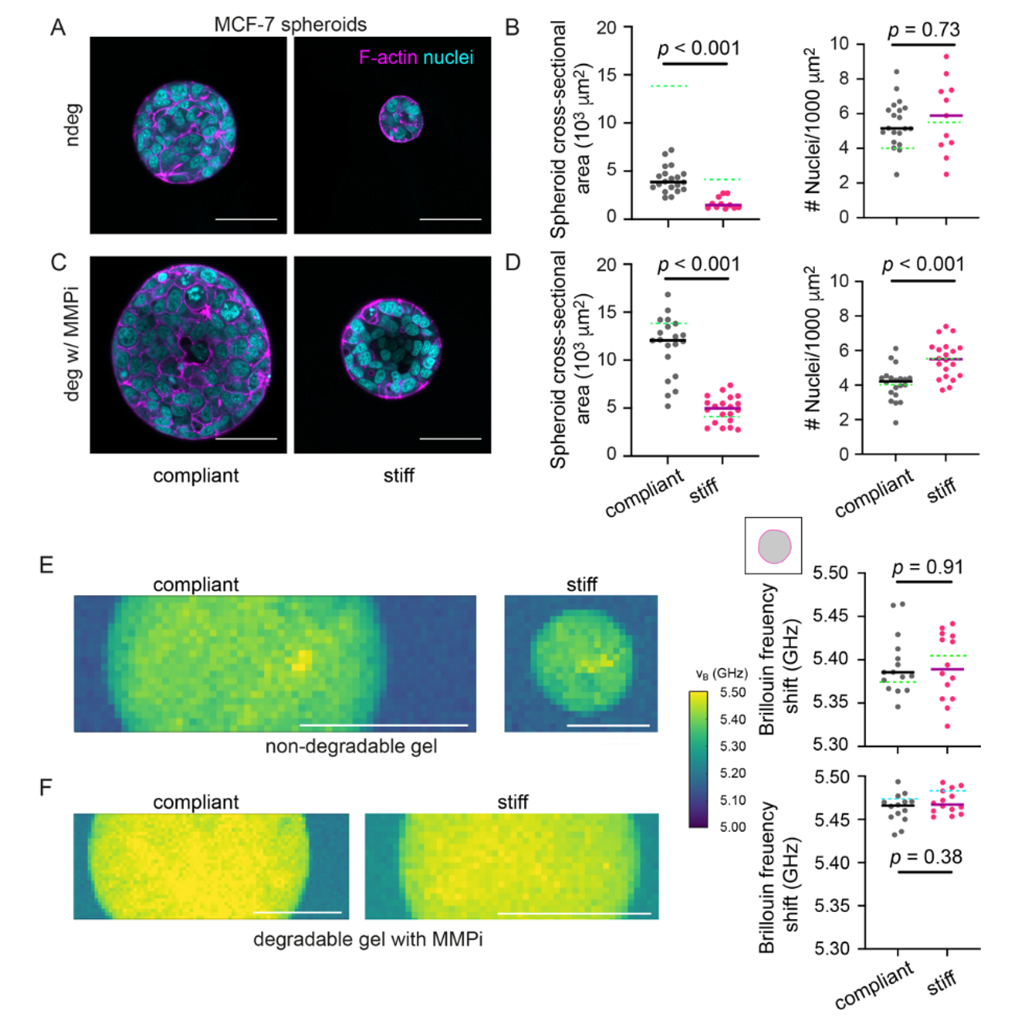Cancer Organoids studied by Brillouin Microscopy
The study investigates how the mechanical properties of tumor spheroids are influenced by the stiffness and degradability of their three-dimensional microenvironment using Brillouin Microscopy. By embedding tumor cells in hydrogels of varying stiffness and degradability, the researchers quantitatively mapped the mechanical properties of the resulting spheroids, discovering that stiffer microenvironments led to increased Brillouin frequency shifts, indicative of higher spheroid stiffness. This adaptation was modulated by factors such as hydrogel stiffness, degradability, and the associated compressive stress on the spheroids.
The research also found that invasive cancer cell lines formed less invasive spheroids with higher stiffness in stiffer, degradable hydrogels compared to more compliant ones. These findings suggest a complex interaction between tumor mechanics and microenvironment properties, contributing to our understanding of cancer progression and potential avenues for therapeutic intervention. The study underscores the importance of considering the mechanical context of the tumor microenvironment in cancer research.
Source and Copyright:
Mahajan, Vaibhav, et al. “Mapping tumor spheroid mechanics in dependence of 3D microenvironment stiffness and degradability by Brillouin Microscopy.” Cancers 13.21 (2021): 5549.
https://doi.org/10.3390/cancers13215549
https://creativecommons.org/licenses/by/4.0/


